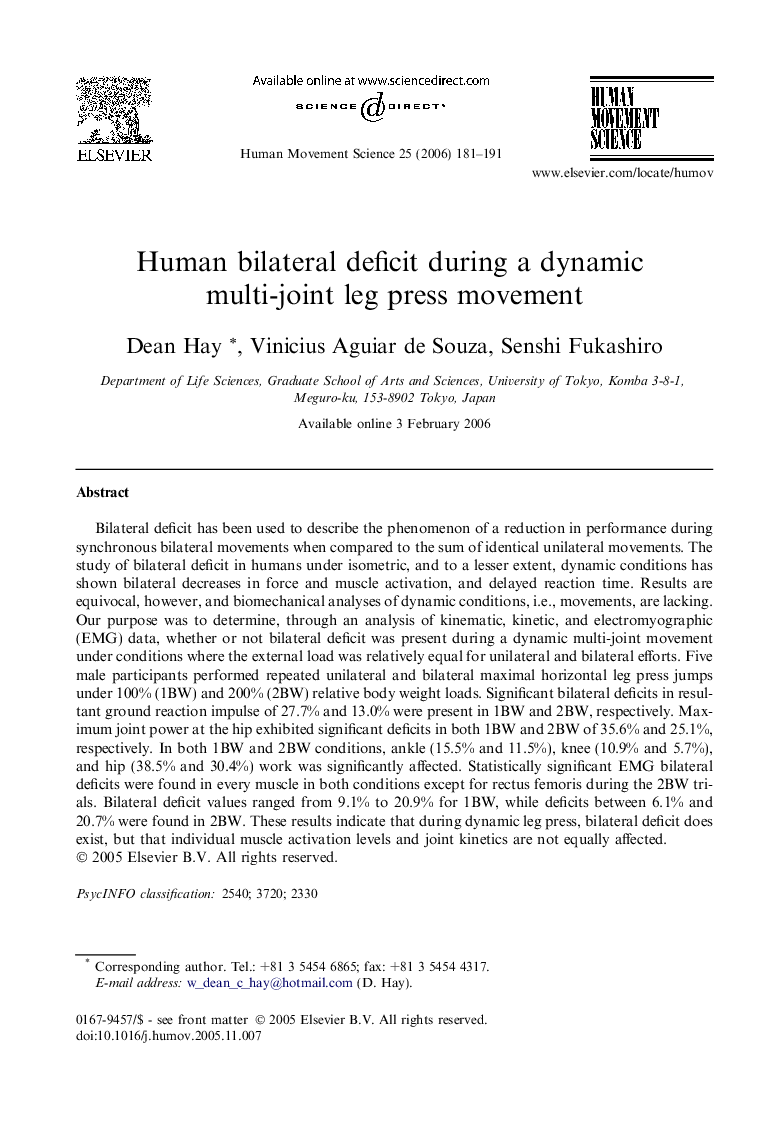| کد مقاله | کد نشریه | سال انتشار | مقاله انگلیسی | نسخه تمام متن |
|---|---|---|---|---|
| 928951 | 922410 | 2006 | 11 صفحه PDF | دانلود رایگان |

Bilateral deficit has been used to describe the phenomenon of a reduction in performance during synchronous bilateral movements when compared to the sum of identical unilateral movements. The study of bilateral deficit in humans under isometric, and to a lesser extent, dynamic conditions has shown bilateral decreases in force and muscle activation, and delayed reaction time. Results are equivocal, however, and biomechanical analyses of dynamic conditions, i.e., movements, are lacking. Our purpose was to determine, through an analysis of kinematic, kinetic, and electromyographic (EMG) data, whether or not bilateral deficit was present during a dynamic multi-joint movement under conditions where the external load was relatively equal for unilateral and bilateral efforts. Five male participants performed repeated unilateral and bilateral maximal horizontal leg press jumps under 100% (1BW) and 200% (2BW) relative body weight loads. Significant bilateral deficits in resultant ground reaction impulse of 27.7% and 13.0% were present in 1BW and 2BW, respectively. Maximum joint power at the hip exhibited significant deficits in both 1BW and 2BW of 35.6% and 25.1%, respectively. In both 1BW and 2BW conditions, ankle (15.5% and 11.5%), knee (10.9% and 5.7%), and hip (38.5% and 30.4%) work was significantly affected. Statistically significant EMG bilateral deficits were found in every muscle in both conditions except for rectus femoris during the 2BW trials. Bilateral deficit values ranged from 9.1% to 20.9% for 1BW, while deficits between 6.1% and 20.7% were found in 2BW. These results indicate that during dynamic leg press, bilateral deficit does exist, but that individual muscle activation levels and joint kinetics are not equally affected.
Journal: Human Movement Science - Volume 25, Issue 2, April 2006, Pages 181–191